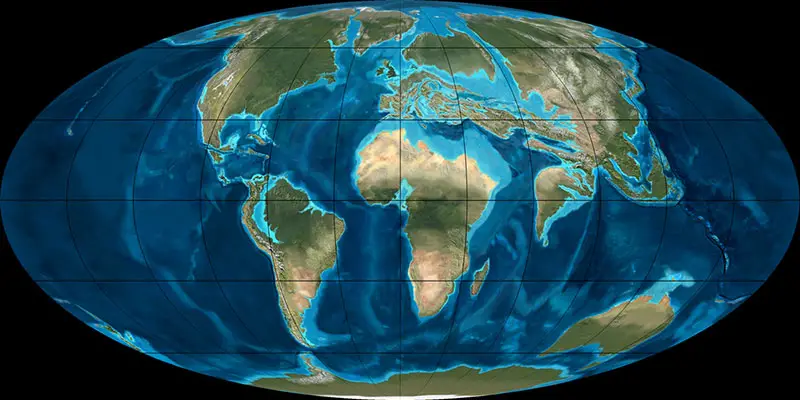†Kohatius (Omomyidae)
Kohatius ist eine Primatengattung innerhalb der Familie Omomyidae, deren 2 Mitglieder ab dem frühen Paläogen (Eozän) im Ypresium lebten, das vor ungefähr 56 Millionen Jahren begann und bis vor 47,8 Millionen Jahren andauerte. Viele Überreste wurden in Pakistan gefunden.
Kohatius ist der Gattungsname eines kleinen Primaten, der im mitleren Eozän in Pakistan verbreitet war.
Seine Überreste wurden an zwei Stellen in Pakistan (Nordwest-Grenze und Provinz Baluchistan) gefunden. Sie sind zwischen 55,8 und 40,4 Millionen Jahre alt.
Kohatius coppensi
Das Typusexemplar mit der Bezeichnung GSP-UM 139 ist ein rechter unterer Molar (M1). Der Fund stammt von der nordwestlichen Grenze Pakistans aus der Kuldana Formation und ist zwischen 48,6 und 40,4 Millionen Jahre alt. Basierend auf der Morphologie des Zahns glaubt man, dass Kohatius coppensi ein baumlebender Insektenfresser war und ein Gewicht von etwa 200 Gramm erreichte.
| Sammlung | Kommentar zum Fundort | Epoche, Alter | Geologie, Formation |
|---|---|---|---|
| Chorlakki | Kuldana | ||
| Kommentar z. Stratigraphie | Lithographie | ||
| Gingerich (2003) places this collection in the earliest Lutetian shown by Gunnell et al. (2008) as being close to the top of the formation, spanning at three beds, and falling just over the Early - Middle Eocene boundary; early Lutetian | hard, calcareous conglomerate |
| Physiologie | |
|---|---|
| Gewicht: | ? |
| Schwestertaxa | |
Das zweite Exemplar von Kohatius coppensi stammt aus der pakistanischen Provinz Baluchistan (Ghazij Formation) und ist zwischen 55,8 und 48,6 Millionen Jahre alt.
Literatur
D. E. Russell, P. D. Gingerich 1980, Un nouveau Primate omomyide dans l'Eocène du Pakistan. Comptes Rendus de l'Académie de Paris, Paris, Série D. 291, p. 621 - 624G. F. Gunnell, P. D. Gingerich, M. Haq, J. I. Bloch, I. H. Khan, W. C. Clyde 2008, New primates (Mammalia) from the early and middle Eocene of Pakistan and their paleobiogeographical implications. Contributions from the Museum of Paleontology, University of Michigan. 32:1, p. 1 - 14
